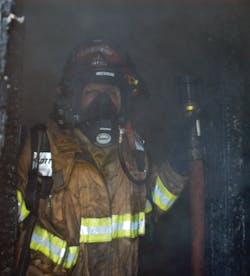Safety & Fitness: Avoiding Strain And Sprains
Over the past two decades, there has been a large focus on physical fitness as a way to improve firefighter health and reduce injuries. While this approach has had some success, firefighters are still getting injured and the rate of strains and sprains is increasing. I am not saying the focus on wellness and fitness has not helped firefighters, but the focus has been on increasing cardiovascular health. What has been missing is a focus on proper movement to avoid strains and sprains. The question then becomes whether we can we simultaneously improve cardiovascular fitness and reduce injury risk.
In the current climate of reduced department budgets, it is imperative that the fire service treats wellness and fitness programs with the importance they deserve as an investment in a key asset – their firefighters. If we reduce injury occurrence and the severity of the injuries that do occur, we are actively avoiding or reducing costly future injuries, keeping in mind that the biggest predictor of future injuries is current and previous injury.
Preparing firefighters for their daily duties brings challenges that can make it just as tough, if not tougher, than preparing professional athletes for game day. Firefighters are required to work at or above their predicted maximum heart rates in environments that can reach 1,500 degrees Fahrenheit for extended periods. They move their bodies into a variety of natural and unnatural positions while wearing protective equipment that weighs up to 70 pounds and working in confined spaces.
Due to these specialized work environments, fire departments have some of the highest workers’ compensation costs of any profession. As a result, the fire service must look for innovative ways to increase the safety of personnel and decrease work-related injury costs. The fire service must identify those who are at risk of injury and ensure their wellness and fitness programs have an injury predictor/prevention component. These programs assist in predicting what is needed for achieving long-term performance, longevity and long-term injury reduction among firefighters.
True wellness, fitness and human performance must be built on a foundation of good movement patterns. In my role as the Orange County Fire Authority (OCFA) wellness and fitness coordinator and later as recruit academy coordinator, I was concerned with the overall fitness of our firefighters and our department’s long-term injury and workers’ compensation costs as well as, the physical, mental and financial toll injuries play on our firefighters. I researched how athletes and others in strenuous, high-risk occupations deal with similar circumstances. In doing this, I discovered studies that showed that athletes, military personnel and firefighters who had poor movement were at an increased risk of injury. Research showed that professional athletic trainers, physical therapists and strength coaches are fixing the problem of movement with a screening system known as the “Functional Movement Screen” (FMS). The fire service could follow suit and look at how firefighters move. We must treat our firefighters as “occupational or tactical athletes” and as long-term investments to be maintained and improved for long-term use.
If professional and tactical athletes are getting positive results, then OCFA should expect a similar outcome. This screening process could help identify individuals in our department who have an increased risk of injury, letting us address and fix the problem areas before they occur, therefore decreasing the cost of injuries sustained.
Next: FMS as a screening tool
For more news and training on firefighter health and wellness, visit: http://www.firehouse.com/topics/health-wellness.
